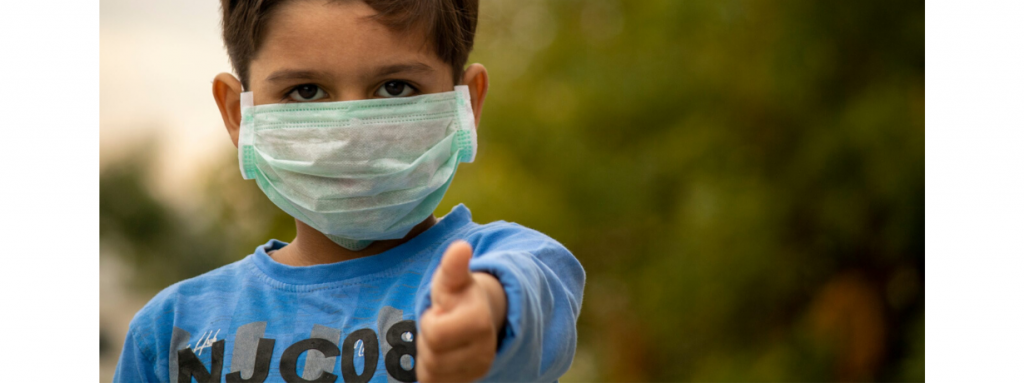5 min read
Melting ice caps in faraway Siberia releasing ancient viruses. Consumption of exotic wildlife by privileged thrill-seekers. Staff in small businesses deprived of sick leave in order to keep costs low. These issues represent climate change, wildlife conservation, sustainable livelihoods and irresponsible business practices. Few would have thought that these issues are interconnected and could emerge as contributors to the COVID-19 pandemic; but they have. In today’s interdependent world, pursuing one’s own needs and self-interest could be harmful to the individual or organization.
Now that this has become obvious, the moment has come for social investors who have been traditionally working in silos to reimagine how they can collaborate to more effectively address these complex challenges.
Well-understood yet under-practiced: barriers to successful collaborations
Despite its value, collaboration between capital providers in Asia has thus far tended to be transient – partnerships are often structured rigidly and bound by standalone projects. And once the agenda has been completed, so too is the relationship.
Many funders have preferred to channel financial support directly to their beneficiaries. The 2017 WINGS’ global report on infrastructure philanthropy found that foundations in Asia are more inclined to retain control over their own projects instead of relying on in-between actors such as intermediaries and networks who can help to build a strong portfolio of impactful deals. Given a chance however, intermediaries who develop these connections for funders and nonprofit organisations are not only able to meet their initial needs but can create a momentum that leads to unintended and bigger social impact for the funder. Take Empact in Singapore for example and the iShine Cloud technology solutions nonprofit which it enabled for funder Singapore Pools in 2019. What started as a single need project in addressing the connectivity challenges of the beneficiaries of Parkinson’s Singapore Society, snowballed into a needs analysis of similar nonprofits and a scalable solution that involved more corporate partners such as Cisco and Microsoft.
Impact platforms, however, are more than just avenues for connections to be made across sectors; they provide continuity across the entire social impact ecosystem. By adopting a traditional funder-fundee relationship, funders may miss out on the potential of fostering meaningful partnerships with their investees and intermediaries to grow sustainably. Networks have the expertise and resources to not only support social enterprises in becoming investment-ready, but also bring a common language to the table to reduce misunderstandings and misalignments during discussions. In fact, overlooking the power of networks may over the long term deepen fundamental problems existing in Asia’s young social entrepreneurship sector.
How collaborative platforms have yielded fruit
Investing in networks has never been more important and fruitful than in a crisis. Amidst the COVID-19 emergency, I have seen stellar collaboratives emerge to catalyse immediate responses from the public and private sectors at scale. Yet, these collaboratives would not have been successful if not for their well-established networks, cemented by years of trust and partnerships developed across different sectors.
Narada Foundation has proven to be a forward-looking leader in such a time. It had invested USD631,000 in the China Foundation Centre back in 2017 because it believed in the scalable and catalytic effects of funding infrastructure organisations, in spite of the longer time it would take for the foundation to see impact. Today, the Centre has become a trusted focal point for overwhelming public donations. It has been able to capture donations in real-time and provide an overview of where help is needed. In addition, Narada Foundation was pivotal in co-launching the China NGO Consortium for COVID-19 with at least 10 other foundations in under a week. It is no coincidence that half of the co-sponsors happened to also be a part of the China Effective Philanthropy Multiplier, a network of foundations that Narada Foundation co-launched in 2017 to address unmet needs in society. The consortium became a mechanism for foundations and at least 40 non-government organizations on the ground to coordinate the deployment of tons of disinfectant, millions of masks, and thousands of walkie-talkies and protective gloves to healthcare providers in the respective Chinese cities. More importantly, it is ahead of the social intervention curve by planning for rebuilding efforts in a post-COVID world.
During the COVID crisis, social enterprises, along with other businesses, were hit hard. Yet some have been able to rise above the fray and emerge as role models, by thriving self-sufficiently while meeting social needs effectively. It is plausible that this was only possible because of their pre-existing networks and relationships. Sehat Kahani, a portfolio of 14 clinics in three provinces in Pakistan is an example. Demand for its services increased in light of public anxiety around the virus but it still managed to provide a safe space for some 600,000 women in an otherwise patriarchal society. Such an example has lent credence to the network of back-end support that has enabled social enterprises like Sehat Kahani to grow so holistically. It gained early support from intermediaries like Spring Accelerator, who in turn, received funding from development finance institutions UK Aid, US Aid and Australia Aid. Sehat Kahani is now a key partner of the Digital Pakistan initiative in the country’s fight against COVID by providing free online consultations for three months.
Here at AVPN, we have also witnessed the power of the network as various members come together to support each others’ initiatives. When The Bill and Melinda Gates Foundation reached out to AVPN to find support for local humanitarian efforts in India’s poorest states – Uttar Pradesh and Bihar -, fellow member, Temasek Foundation, immediately reached out to commit their resources. With this exemplary move, I am excited to see how we can continue reaching out to capital providers across the network to match their resources with needs on the ground (share your resources here!).
Preparedness in the New World
It is apparent to me that the main reason behind unsuccessful collaborations in Asia is the lack of trust in the potential of networks. And, this stems from an opaque understanding of the philanthropic landscape and its players. Philanthropic funders in Asia are often more private, best practices are not frequently shared, data systems are insufficiently sophisticated to draw consensus from, and the region’s needs are myriad based on local socio-economic contexts.
This problem is not unique to philanthropy and social investment. From policymakers to corporations, I see funders and resource providers striving to scale their giving impact based on their expertise, but there is so much more potential to complement each other and address needs on an ecosystem level.
How can you start on your collaboration journey? Three steps you can take during the COVID-19 pandemic:
- Explore what fellow philanthropists and social investors are doing in the region to assess where capital is being deployed and pick up best practices
- Hear from local representatives on the ground to identify where the greatest needs are
- Participate in an existing collaborative initiative that you have identified as a credible platform in ensuring resources are deployed effectively
AVPN has launched a COVID-19 platform to meet the most urgent needs that are surfacing across Asia. To assess how you can take action across these three pathways, learn more here.


















